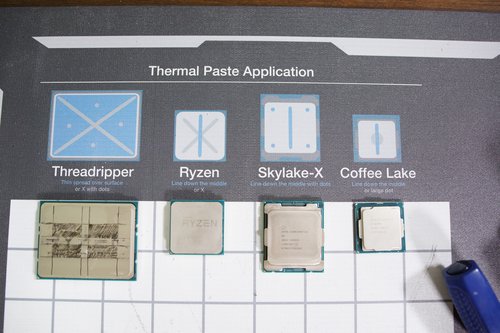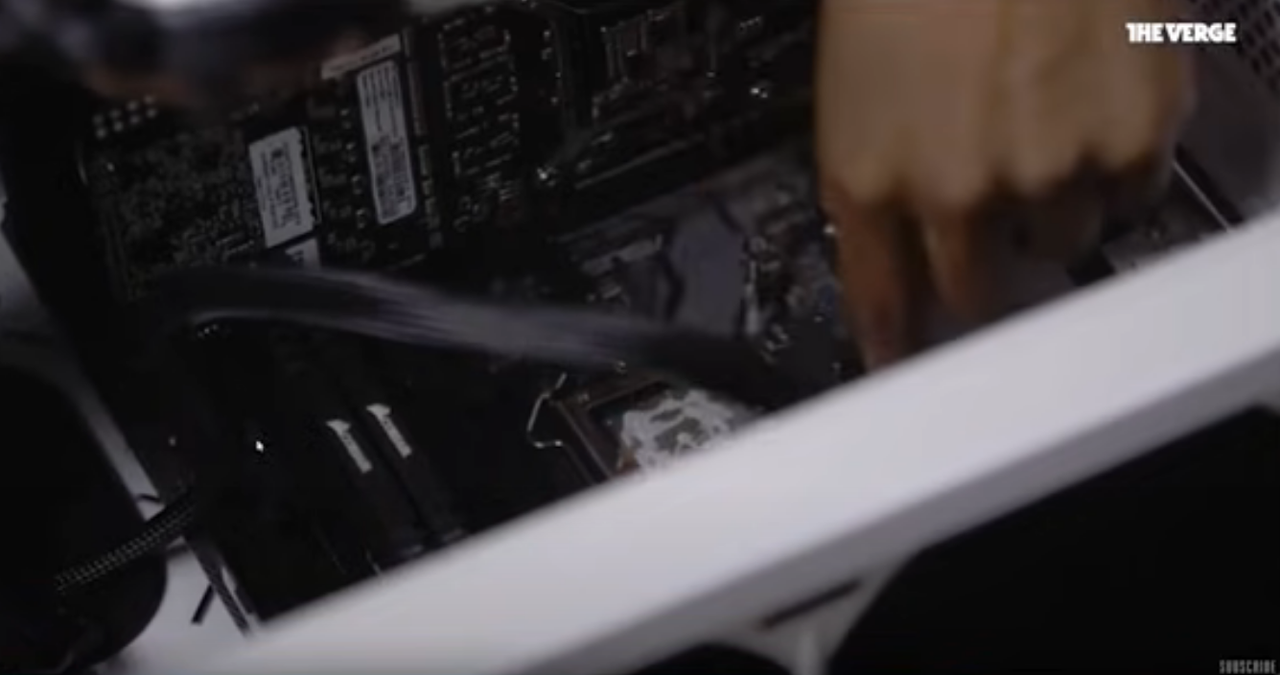I had to repaste my CPU two weeks ago. This time, I only put a "pea" of paste, instead of covering the whole cpu with a layer (this, by the way, didn't spill to the sides)
I've had SIGNIFICANTLY worse temperatures because of this - compared to when I covered the whole CPU with a layer of paste
My temps before were around 23-24 c (even lower) with my windows closed. Now, with the "pea" method, I am averaging at at least 30 c, it hasn't gone lower
Is the "pea" method one of those myths about PC building, like static electricity killing components when handled improperly. I'm not denying that, maybe, at the some point, that was the case, but components have since improved and so those rules to PC building/handling components are now irrelevant
thoughts?
my theory is that:
With the pea method, the paste dries up quickly, and drives the temps higher; in comparison, with a layer of THICK paste, only a small amount of paste dries up and there is still plenty to be utilized by the cpu
edit:
at full load, my temps are 40c and rising. this is ridiculous, and on idle it is 30c (MINIMUM)
tldr; using a "pea" of paste is wrong; putting a thick amount of paste outweighs ANY risks it poses (provided that you dont overdo it and paste doesn't leak all over the place)
this is on a xeon system; on my i7 its a lot worse (like 50-55c worse)
View: https://imgur.com/WSrTXUs
In contrast, these are my temps when using the "layer" method (yes, i know loads are different, and this is when its in indle but just to give you perspective, at the moment, when idle, my temps are at least 30c, and only goes up the longer i have the system on- this is a lot worse on my i7) Edit: This is air-cooling, by the way, and I am using Kyronaught Extreme (2021) paste
View: https://imgur.com/6NqDFEf
Edit:
This is air-cooling, by the way, and I am using Kyronaught Extreme (2021)
I've had SIGNIFICANTLY worse temperatures because of this - compared to when I covered the whole CPU with a layer of paste
My temps before were around 23-24 c (even lower) with my windows closed. Now, with the "pea" method, I am averaging at at least 30 c, it hasn't gone lower
Is the "pea" method one of those myths about PC building, like static electricity killing components when handled improperly. I'm not denying that, maybe, at the some point, that was the case, but components have since improved and so those rules to PC building/handling components are now irrelevant
thoughts?
my theory is that:
With the pea method, the paste dries up quickly, and drives the temps higher; in comparison, with a layer of THICK paste, only a small amount of paste dries up and there is still plenty to be utilized by the cpu
edit:
at full load, my temps are 40c and rising. this is ridiculous, and on idle it is 30c (MINIMUM)
tldr; using a "pea" of paste is wrong; putting a thick amount of paste outweighs ANY risks it poses (provided that you dont overdo it and paste doesn't leak all over the place)
this is on a xeon system; on my i7 its a lot worse (like 50-55c worse)
View: https://imgur.com/WSrTXUs
In contrast, these are my temps when using the "layer" method (yes, i know loads are different, and this is when its in indle but just to give you perspective, at the moment, when idle, my temps are at least 30c, and only goes up the longer i have the system on- this is a lot worse on my i7) Edit: This is air-cooling, by the way, and I am using Kyronaught Extreme (2021) paste
View: https://imgur.com/6NqDFEf
Edit:
This is air-cooling, by the way, and I am using Kyronaught Extreme (2021)
Last edited:



